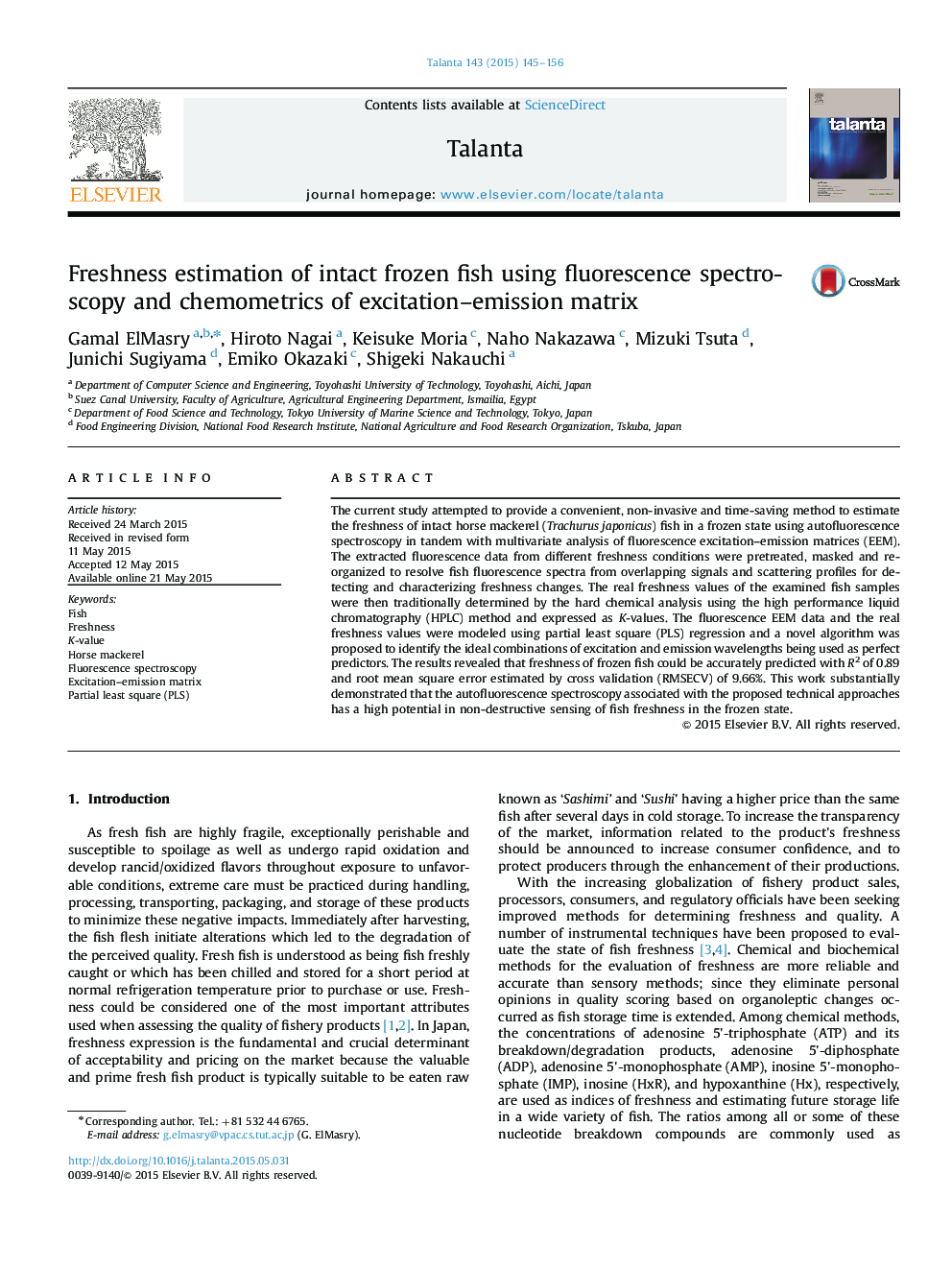| Article ID | Journal | Published Year | Pages | File Type |
|---|---|---|---|---|
| 1241868 | Talanta | 2015 | 12 Pages |
•Freshness of frozen fish was evaluated by fluorescence spectroscopy technique.•Actual fish freshness expressed by K-value was estimated by nucleotide-based method.•A mask was developed to treat the EEM data for removing scatter signals.•The EEM data and K-values were modeled using partial least square (PLS) regression.•A novel algorithm was proposed to identify the ideal excitation-emission wavelengths.
The current study attempted to provide a convenient, non-invasive and time-saving method to estimate the freshness of intact horse mackerel (Trachurus japonicus) fish in a frozen state using autofluorescence spectroscopy in tandem with multivariate analysis of fluorescence excitation–emission matrices (EEM). The extracted fluorescence data from different freshness conditions were pretreated, masked and reorganized to resolve fish fluorescence spectra from overlapping signals and scattering profiles for detecting and characterizing freshness changes. The real freshness values of the examined fish samples were then traditionally determined by the hard chemical analysis using the high performance liquid chromatography (HPLC) method and expressed as K-values. The fluorescence EEM data and the real freshness values were modeled using partial least square (PLS) regression and a novel algorithm was proposed to identify the ideal combinations of excitation and emission wavelengths being used as perfect predictors. The results revealed that freshness of frozen fish could be accurately predicted with R2 of 0.89 and root mean square error estimated by cross validation (RMSECV) of 9.66%. This work substantially demonstrated that the autofluorescence spectroscopy associated with the proposed technical approaches has a high potential in non-destructive sensing of fish freshness in the frozen state.
Graphical abstractFigure optionsDownload full-size imageDownload as PowerPoint slide
